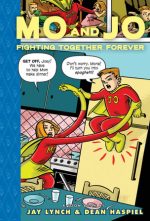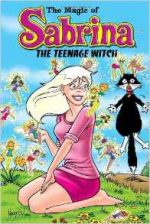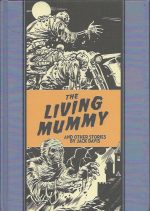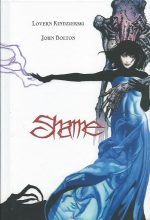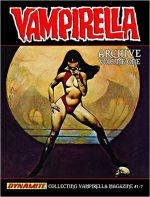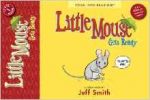
By Dudley D. Watkins & various (DC Thomson)
ISBN: 978-0-85116-712-8
Win’s Christmas Gift Recommendation: Evergreen Seasonal Traditions Celebrated and the ideal last minute gift… 10/10
Published eternally in perfect tandem, The Broons and Oor Wullie are two of the longest running newspaper strips in British history, having appeared almost continuously in the Scottish Sunday Post since their dual debuts in the March 8th 1936 edition.
Both the boisterous boy and the gregariously engaging inner city clan were co-created by writer and Editor Robert Duncan Low in conjunction with Dudley D. Watkins; a man who would become DC Thomson’s greatest – and signature – artist.
Three years later the strips began being collected in reprint editions as Seasonal Annuals; alternating stars and years right up to the present day and remaining best-sellers every single time.
Low (1895-1980) began at the publishing monolith as a journalist, rising to the post of Managing Editor of Children’s Publication and launching, between 1921 and 1933, the company’s “Big Five†story-papers for boys: Adventure, The Rover, The Wizard, The Skipper and The Hotspur.
In 1936 his next brilliant idea was the Fun Section: an 8-page pull-out comic strip supplement for Scottish national newspaper The Sunday Post. The illustrated accessory launched on 8th March and from the very outset The Broons and Oor Wullie were its unchallenged stars…
Low’s shrewdest move was to devise both strips as domestic comedies played out in the charismatic Scottish idiom and broad unforgettable vernacular. Ably supported by features such as Auchentogle by Chic Gordon, Allan Morley’s Nero and Zero, Nosey Parker and other strips, they laid the groundwork for the company’s next great leap.
In December 1937 Low launched the DC Thomson’s first weekly pictorial comic. The Dandy was followed by The Beano in 1938 and early-reading title The Magic Comic the year after that.
War-time paper shortages and rationing sadly curtailed this strip periodical revolution, and it was 1953 before the next wave of cartoon caper picture-papers. The Topper started the ball rolling again (with Oor Wullie in the logo and masthead but not included amongst the magazine’s regular roster) in the same year that Low & the great Ken Reid created Roger the Dodger for The Beano…
Low’s greatest advantage was his prolific illustrator Dudley Dexter Watkins, whose style, more than any other, shaped the look of DC Thompson’s comics output until the bombastic advent of Leo Baxendale shook things up in the mid-1950s.
Watkins (1907-1969) had started life in Manchester and Nottingham as an artistic prodigy. He entered Glasgow College of Art in 1924 and it wasn’t long before he was advised to get a job at Dundee-based DCT, where a 6-month trial illustrating boys’ stories led to comic strip specials and some original cartoon creations.
Percy Vere and His Trying Tricks and Wandering Willie, The Wily Explorer made him a dead cert for both lead strips in the Sunday Post‘s proposed Fun Section and, without missing a beat, Watkins later added The Dandy‘s Desperate Dan to his weekly workload in 1937, eventually including The Beano‘s placidly and seditiously outrageous Lord Snooty seven months later.
Watkins soldiered on in unassailable homely magnificence for decades, drawing some of the most lavishly lifelike and winningly hilarious strips in illustration history. He died at his drawing board on August 20th 1969. For all those astonishingly productive years he had unflaggingly drawn a full captivating page each of Oor Wullie and The Broons every week, and his loss was a colossal blow to the company.
DC Thomson’s chiefs preferred to reprint old Watkins episodes of the strips in both the newspaper and the Annuals for seven years before a replacement was agreed upon. The Dandy reran Watkins’ Desperate Dan stories for twice that length of time.
An undeniable, rock-solid facet of Scots popular culture from the very start, the first Broons Annual (technically Bi-Annual) appeared in 1939, alternating with the first Oor Wullie book a year later (although, due to wartime paper restrictions, no annuals at all were published between 1943 and 1946) and for millions of readers no year can truly end without them.
This particular commemorative collection is tinged with sadness as the strips included here – probably written by David Donaldson, Iain Reid and some anonymous others – are perhaps the very best of Watkins’ astounding career, as well as his last.
So What’s the Set Up?: the Brown family inhabit a tenement flat at 10 Glebe Street, in the timelessly metafictional Scottish industrial everytown of Auchentogle (sometimes Auchenshoogle); based on the working class Auchenshuggle district of Glasgow. As such it’s an ideal setting in which to tell gags, relate events and fossilise the deepest and most reassuring cultural archetypes for sentimental Scots wherever in the world they might actually be residing. And naturally, such a region was the perfect sounding board to portray all the social, cultural and economic changes that came after the war…
The adamant, unswerving cornerstone of the family feature is long-suffering, ever-understanding Maw, who puts up with cantankerous, cheap, know-it-all Paw, and their battalion of stay-at-home kids. These comprise hunky Joe, freakishly tall Hen (Henry), sturdy Daphne, gorgeous Maggie, brainy Horace, mischievous twins Eck and the unnamed “ither ane†plus a wee toddling lassie referred to only as “The Bairnâ€.
Not officially in residence but always hanging around is sly, patriarchal buffoon Granpaw – a comedic gadfly who spends more time at Glebe Street than his own cottage and constantly tries to impart his decades of out-of-date, hard-earned experience to the kids… but do they listen?
Offering regular breaks from the inner city turmoil and a chance to simultaneously sentimentalise, spoof and memorialise more traditional times, the family frequently repair to their But ‘n’ Ben (a dilapidated rustic cottage in the Highlands) to fall foul of the weather, the countryside and all its denizens: fish, fowl, farm-grown, temporary and touristic…
As previously stated, Oor Wullie also launched on March 8th 1936 with his own collected Annual compilations subsequently and unfailingly appearing in the even years.
The basic set-up is sublimely simply and eternally evergreen, featuring an imaginative, scruff with a weakness for mischief, talent for finding trouble and no hope of ever avoiding parental retribution when appropriate…
Wullie – AKA William MacCallum – is an archetypal good-hearted rascal with time on his hands who can usually be found sitting on an upturned bucket at the start and finish of his page-a-week exploits. His regular cast includes Ma and Pa, local copper P.C. Murdoch, assorted teachers and other interfering adults who either lavish gifts or inflict opprobrium upon the little pest and his pals Fat Boab, Soapy Joe Soutar, Wee Eck and others. As a grudging sign of changing times, in later volumes such as this, he’s occasionally caught in the company of fetching schoolgirls like Rosie and Elizabeth…
A compilation in monochrome with some full-colour pages, The Sensational Sixties was released in 1999 as part of a concerted drive to keep earlier material available to fans: a lavishly sturdy hardback (still readily available through internet vendors) offering a tantalising selection of Sunday pages from 1960 to August 24th 1959, covering every aspect of that white-hot era of rapid change, and yet all still uproariously funny even now…
Each year of selected gems commences with an atmospheric photo-clippings and news-headlines feature, book-ending every following year with a similar capsule feature of the unfolding years and usually accompanied by a colour Watkins cover or title-page from an Annual of the period.
The endless escapades of the strip stars comprise the happily standard subject-matter: galling goofs and gaffes, family frolics, sly pranks and cruel comeuppances: a regular menu of gloriously slapstick shenanigans including plumbing pitfalls, decorating disasters, fireplace fiascos, school foolishness, dating dilemmas, appliance atrocities, fashion freak-outs, bothered Bobbies, teacher tantrums, excessive exercise exploits, chore-dodging and childish pranks by young and old alike, all glimpsed through the lens of a comfortably traditional world inexorably transitioning as fashionable technology slowly altered the lives of everyone, whether they wanted it to or not…
Although The Beatles, political and celebrity assassinations, space races and moon-shots or Vietnam apparently played little part in the lives of our Scottish stars, contemporary dance crazes are acknowledged, as are student-hostellers, package holidays, electric blankets and long-haired, fashion-crazed boys. There’s even an increase in football-related japery in the 1966 and 1967 chapters for some reason…
Uncontested and always welcome are wry and weighted comparisons of the good old days with mere modernity, rib-tickling scenes of sledding and skating, stolen candies, Christmas revels, torn clothes, recycled comics, breakings into one’s own home, sparring school kids, ladies and lassies lost and found, harmless practical jokes and social scandals: stories intended to take our collective mind off troubles abroad and at home, and for every thwarted romance of poor Daphne and Maggie or embarrassing fiasco focussing on Paw’s cussed recalcitrance, there’s an uproarious chase, riotous squabble and no-tears scrap for the little ‘uns.
With snobs to deflate, bullies to crush, duels to fight, chips to scoff, games to win and rowdy animals (from cats to cows) to escape, the eternally affable humour and gently self-deprecating, inclusive frolics make these superbly crafted strips an endlessly entertaining, superbly nostalgic treat.
Fans of the creative process will also delight in bonus features such as unused pencilled pages of Watkins’ art and the fulsome tribute section showing the illustrator’s first and last Broons and Oor Wullie strips: simply four more of the near 3500 pages he immaculately conceived for the staunchly timeless features.
Packed with all-ages fun, rambunctious homespun hilarity and deliriously domestic warmth, these examples of comedic certainty and convivial celebration are a sure cure for post-modern glums… and you can’t really have a happy holiday without that, can you?
© D.C. Thomson & Co., Ltd. 1998.
